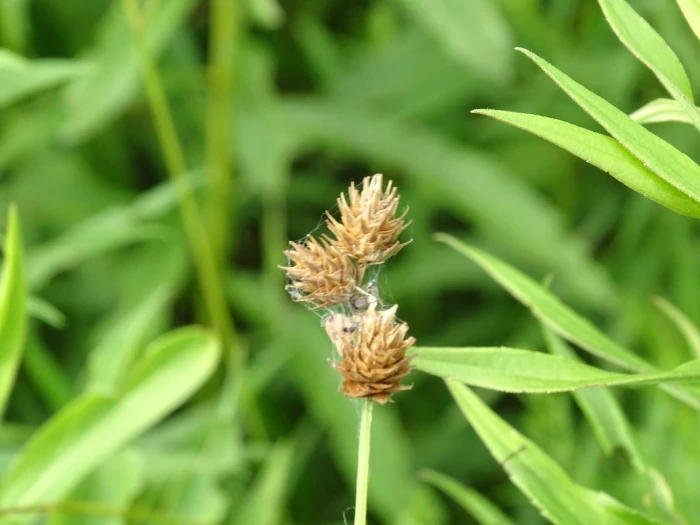Troublesome Sedge
(Carex molesta)
Troublesome Sedge (Carex molesta)
/
/

Reuven Martin
Public Domain
Image By:
Reuven Martin
Recorded By:
Copyright:
Public Domain
Copyright Notice:
Photo by: Reuven Martin | License Type: Public Domain | License URL: http://creativecommons.org/publicdomain/zero/1.0/ | Rights Holder: Reuven Martin | Publisher: iNaturalist | Date Created: 2020-07-21T16:02:43-07:00 |





























Estimated Native Range
Climate Requirements for Michigan City, Indiana
| This Plant | Your Site | Plant Suitability for Your Location | ||
|---|---|---|---|---|
| • Precipitation | 17" - 55" | 39" | Aquatic | Aquatic |
| • High Temp. | 78°F - 96°F | 84°F | Your summer temperatures are normal for this plant. | Excellent |
| • Low Temp. | -3°F - 32°F | 16°F | Your winter temperatures are normal for this plant | Excellent |
This plant should grow well at your location with about N inches per year (Y minutes per month) of irrigation.
Summary
Carex molesta, commonly known as Troublesome Sedge, is a semi-deciduous perennial sedge native to moist meadows, open woodlands, and grasslands in Central and Eastern USA, as well as Ontario and Quebec. It forms dense clumps of stems that can reach up to 1 meter tall, with narrow, grass-like leaves that are typically about 35 centimeters (14 inches) long. The inflorescence is a distinctive open cluster of green, spherical spikes, each measuring 0.5 to 1.5 centimeters (0.20 to 0.59 inches) long, appearing in late spring to early summer. The flowers are not particularly showy but add a fine texture to the landscape.
Troublesome Sedge is valued for its ability to form dense ground cover and its adaptability to a range of soil conditions, making it useful for erosion control and naturalistic plantings. It is often used in rain gardens, as a border plant, or in mass plantings for textural contrast. This sedge prefers consistently moist soils but can tolerate periods of dryness once established. It thrives in full sun to part shade and requires soils with medium to fast drainage. While generally low-maintenance, it can become invasive in some conditions, spreading by rhizomes and self-seeding, so care should be taken to manage its spread in garden settings.CC BY-SA 4.0
Troublesome Sedge is valued for its ability to form dense ground cover and its adaptability to a range of soil conditions, making it useful for erosion control and naturalistic plantings. It is often used in rain gardens, as a border plant, or in mass plantings for textural contrast. This sedge prefers consistently moist soils but can tolerate periods of dryness once established. It thrives in full sun to part shade and requires soils with medium to fast drainage. While generally low-maintenance, it can become invasive in some conditions, spreading by rhizomes and self-seeding, so care should be taken to manage its spread in garden settings.CC BY-SA 4.0
Plant Description
- Plant Type: Grass
- Height: 2-3 feet
- Width: 0.8-1 feet
- Growth Rate: Slow
- Flower Color: N/A
- Flowering Season: Spring
- Leaf Retention: Semi-Deciduous
Growth Requirements
- Sun: Full Sun, Part Shade
- Water: Medium
- Drainage: Medium, Fast
Common Uses
Bird Garden, Deer Resistant, Low Maintenance
Natural Habitat
Moist meadows, open woodlands, and grasslands
Other Names
Common Names:
Scientific Names: Carex molesta, Carex brevior subsp. unranked, Carex brevior var. molesta
GBIF Accepted Name: Carex molesta Mack.